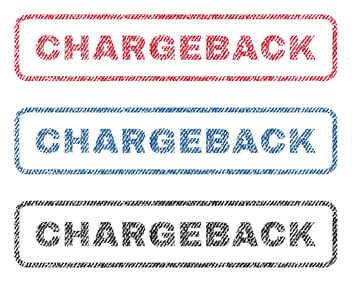Comprehensive Chargeback Management Guide - Part 3
Part 3: Chargeback Fraud
Now that you know what chargebacks are (Part 1), and how they can negatively affect your organization (Part 2), this post will focus on chargeback fraud and provide some basic tips for preventing it.
What is Chargeback Fraud?
Chargeback fraud is the process of disputing a perfectly legitimate transaction with the intent of scamming a merchant out of the money you paid them. It has become very popular in recent years, as it is a relatively easy scam to pull off without many direct consequences. Chargeback fraud now accounts for over one-third of all fraud losses in the US, and combining friendly fraud brings that number up to a staggering 71%. It is as easy to initiate as a call to the bank, and if unsuccessful, the only consequence is that the fraudster is stuck paying for the product they tried to scam the merchant out of. The worst case scenario is that you are banned from using that website again, but with the prevalence of ecommerce it would probably not be very hard to move onto another website. If you are thinking that most of your organizations chargebacks seem legitimate, experts estimate that 86% of chargebacks are fraudulent. This post will outline the various types of chargeback fraud and provide some basic tips for preventing them. The fourth post in this series will provide more details on preventing chargebacks.
Friendly Fraud
Chargeback Fraud and Friendly Fraud are often used interchangeably, but they are two very different things. While chargeback fraud implies malicious intent, friendly fraud is the result of customer forgetfulness, family members making unknown purchases, and misunderstandings about merchant return policies. Customers who commit friendly fraud usually do not realize they are doing anything wrong, or the consequences their actions have on the merchant. Some tips to preventing friendly fraud are:
- Have a straightforward and flexible return policy
- Make the return process easy and convenient
- Require creating an account in order to purchase something
- Utilize shipment tracking and signature verification
- Make sure the information that appears on statements easily identifies you
- The other tips in this post concerning chargeback fraud will also help with friendly fraud
Recurring Payments Fraud
One of the most common chargeback fraud schemes is related to subscription based services. After a few months of utilizing a service or subscription, a customer will claim that they were misled or misunderstood the terms and did not realize they were signing up for a subscription. The most likely reason for this chargeback, however, is that the customer forgot to cancel their free trial or just wanted to use your service for free. If you have no proof of the customer utilizing the service (login logs, usage statistics, etc.) or that you clearly state the nature of the subscription, you can become a very easy target for this type of chargeback fraud. Some basic tips to preventing recurring payments fraud are:
- Have a very detailed and easy to understand subscription policy
- Make it very clear that your service is a regularly billed subscription
- Instead of free trial periods, offer a free month bundled in with a paid subscription
- Keep logs of user logins and usage
Item Damaged/Not Delivered Fraud
Part-time fraudsters have found out that claiming that a product was never delivered, or that it was delivered damaged is an easy way to get free stuff. This type of chargeback fraud is often called online shoplifting. Just like with real shoplifting, fraudsters are receiving a product and not having to pay for it. Many merchants do not require a signature on delivery for their products, as it is seen as inconvenient for the customer. While it is more convenient, it increases the potential for fraud significantly. Some general tips for preventing item not delivered fraud are:
- Utilize an Address Verification Service
- Require a signature on delivery (If you do not wish to do this, at least use shipment tracking)
- Use direct delivery only requirements to prevent re-routing of packages
Unauthorized Purchase Fraud
Another common fraud situation occurs when a customer claims that a purchase was unauthorized or that they do not recognize it. It is often the result of a family member buying something without the cardholder’s permission. The cardholder will either reverse the charge without trying to find out the situation, or because they cannot return the unpermitted purchase but still want their money back. The easiest ways to prevent this type of fraud are:
- Follow all previous advice about return policies
- Require creating an account to purchase anything
- Make sure the information that appears on statements easily identifies you
These are the four main categories of chargeback fraud. While some basic tips were provided, make sure to read part 4: Preventing Chargebacks.


